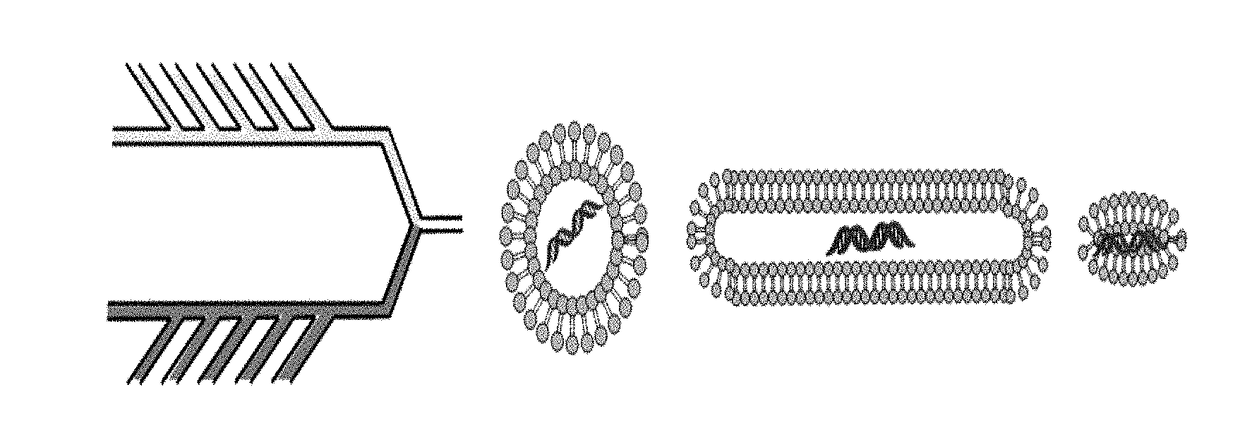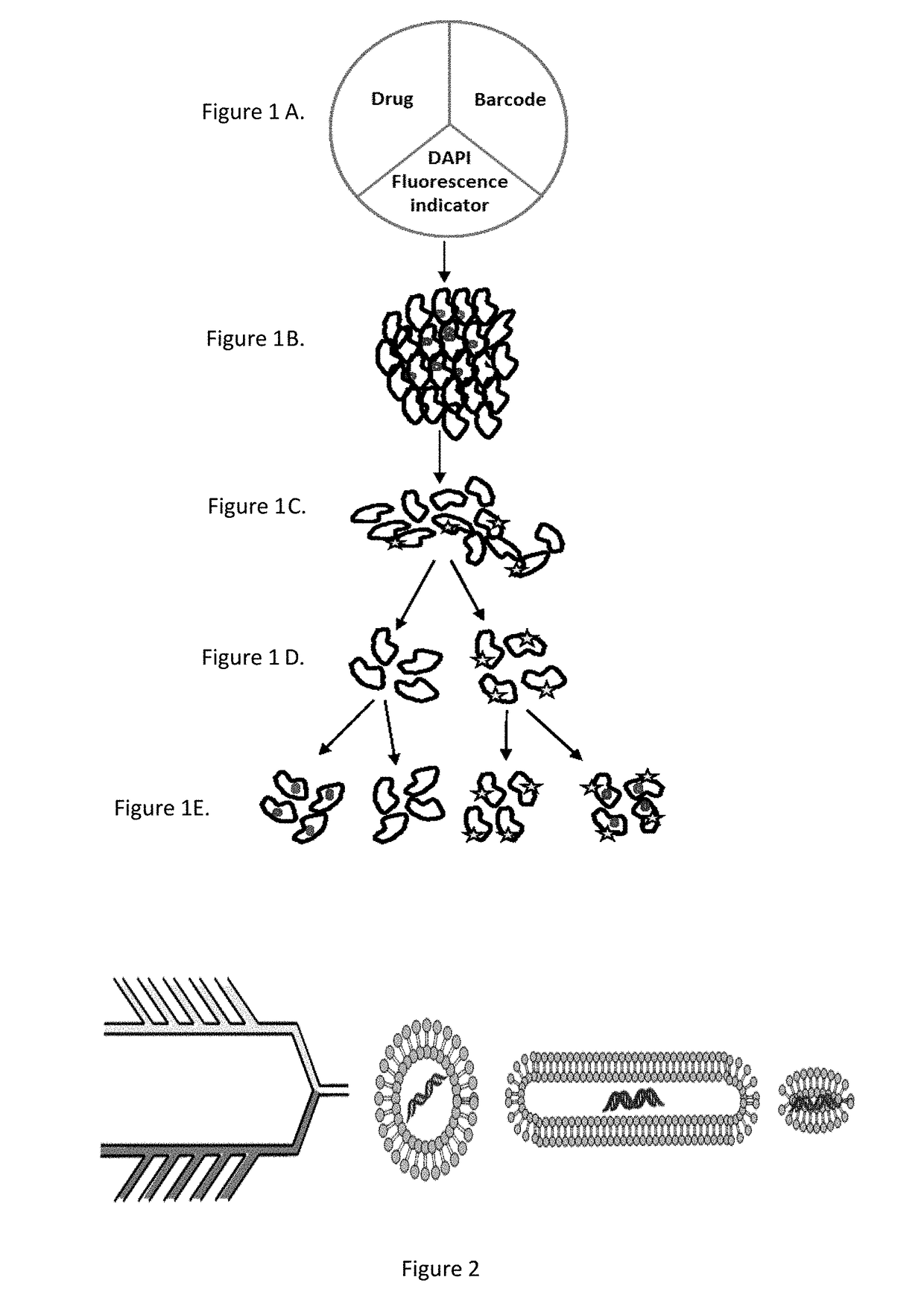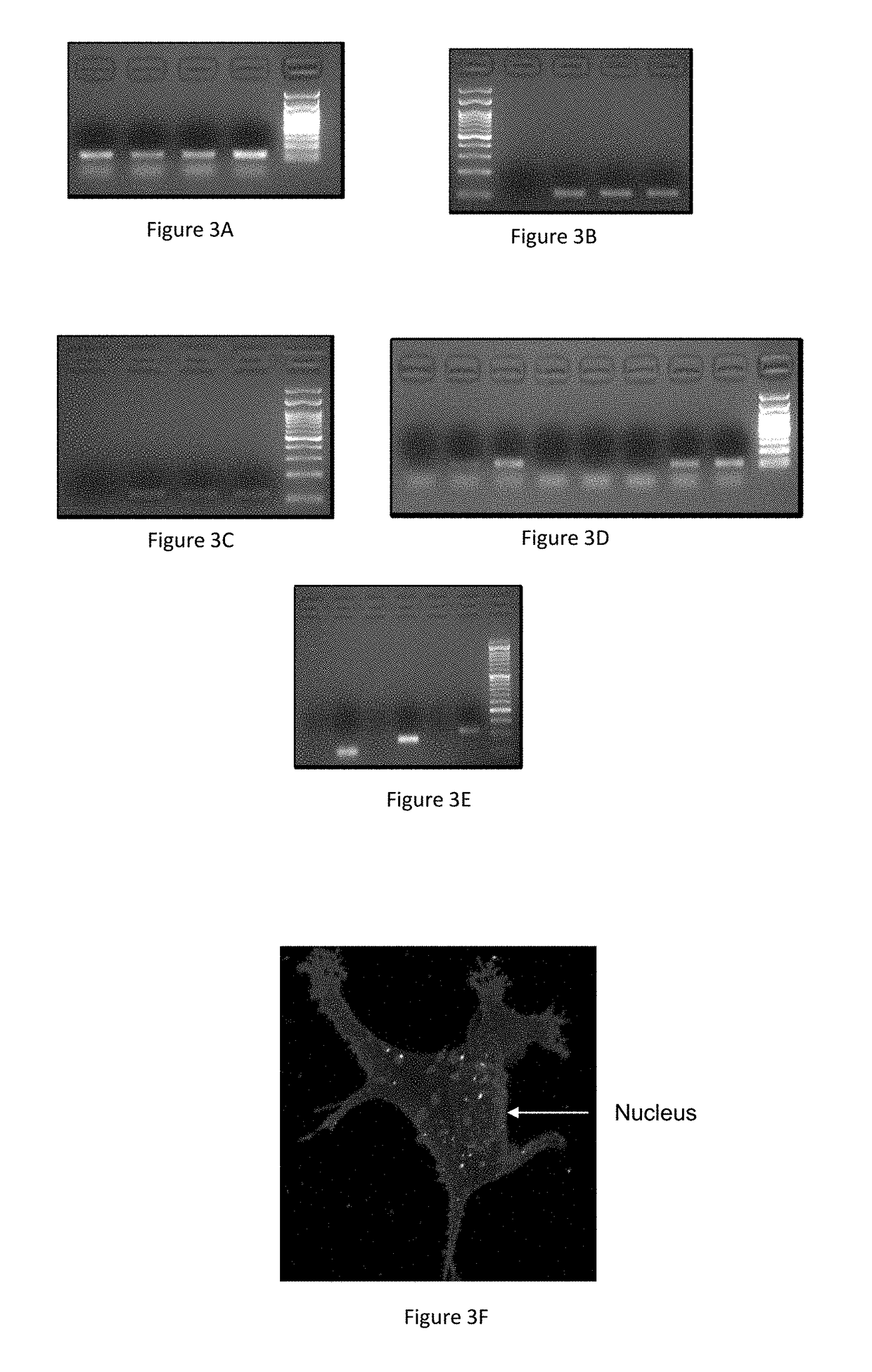Compositions and methods for therapeutics prescreening
- Summary
- Abstract
- Description
- Claims
- Application Information
AI Technical Summary
Benefits of technology
Problems solved by technology
Method used
Image
Examples
example 1
Nanoparticle Fabrication and Labeling
[0175]Nanoparticles will be fabricated of lipids using an in-line microfluidic setup (Jahn, A., et al. 2007, Langmuir 23, 6289-6293) adapted to accommodate high-throughput synthesis and labeling of the particles (FIG. 2). Particles of appropriate sizes to accommodate the therapeutic payload are fabricated. Chemical agents are loaded into stable HSPC particles (Schroeder, A. et al. 2007, Langmuir 23, 4019-4025) and biological therapeutics (e.g., protein / RNA) are synthesized inside ˜200 nm ‘protein producing nanoparticles’. Recently developed is a synthetic nanoparticles that can be controllably triggered to synthesize proteins and RNA at a target site (Schroeder, A. et al. 2012, Nano Lett 12, 2685-2689). These nanoparticles consist of lipid vesicles filled with the molecular machinery responsible for transcription and translation, including amino acids, ribosomes, and DNA caged with a photo-labile protecting group. The particles serve as nano-fact...
example 2
Assaying Primary and Metastatic Models
[0177]Initial in vivo studies were carried out using 4T1 breast cancer models in BALB / c mice (FIG. 4), reported by Weinberg and coworkers. To confirm the clinical accuracy of these models, the bio-distribution and activity of the theranostic nanoparticles was also tested in human derived tumors established in human Embryonic Stem Cell (hESC) teratoma. These tumors are considered to mirror the clinical scenario in an accurate manner including the microenvironment, intratumoral morphologic heterogeneity, cancer cell subpopulations and cellular phenotypes (Burgos-Ojeda, D. et al. 2013, Cancer Res 73, 3555-3565, 2845).
[0178]First, in order to examine the efficiency of delivery of the barcodes using liposomes, mice were administered with either liposomes containing barcode or naked barcode. 48 hours after injection, the tumors were harvested, homogenized and the barcodes were extracted and amplified. The basal amplification represents unspecific ampl...
example 3
Feasibility of the Process
[0187]In vivo experiments showed that using barcode concentration lower than 2 μM resulted in prevention of detection (under the LOD of the systems). The concentration of the particles used for the in vitro studies was hundredth of the concertation of the particles used for the in vivo studies, to prevent overflowing of the particles inside the single layer of the cells. This allows good statistics and robust analysis. Analysis of the encapsulated barcodes showed that the sufficient range of barcode molecules inside the particle should range between 5-100 barcode molecules / particle (this was calculated based on the DNA to lipid molar ratio). For statistical analysis of the results, it was found that the efficient particles concertation has a range of 2-20 μM. When using a concentration lower than 2 μM, there is high possibility that not all the cells will contain at least one particle. Above this concertation, the SNR. (signal to noise ratio) in the system ...
PUM
| Property | Measurement | Unit |
|---|---|---|
| Time | aaaaa | aaaaa |
| Diameter | aaaaa | aaaaa |
| Length | aaaaa | aaaaa |
Abstract
Description
Claims
Application Information
 Login to View More
Login to View More - R&D
- Intellectual Property
- Life Sciences
- Materials
- Tech Scout
- Unparalleled Data Quality
- Higher Quality Content
- 60% Fewer Hallucinations
Browse by: Latest US Patents, China's latest patents, Technical Efficacy Thesaurus, Application Domain, Technology Topic, Popular Technical Reports.
© 2025 PatSnap. All rights reserved.Legal|Privacy policy|Modern Slavery Act Transparency Statement|Sitemap|About US| Contact US: help@patsnap.com



